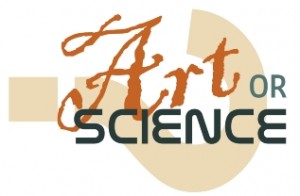 Customers identify with organizations that are less rules-driven and more flexible and mindful of individual needs. High-level customer-centricity is driven more by art than science.
Customers identify with organizations that are less rules-driven and more flexible and mindful of individual needs. High-level customer-centricity is driven more by art than science.
What really matters is the extent to which customers value distinctive or unique outputs from their suppliers, write Joseph M. Hall and M. Eric Johnson in the HBR article, “When Should a Process Be Art, Not Science?” The “traditional scientific approach (of) imposing rules that spell out what to do in every possible circumstance” has been, it seems, adopted by many companies to apply to their customer interfaces, as well. Rote performance, however, will no longer satisfy today’s customers, who expect greater responsiveness.
Ritz-Carlton realized the need to re-orient its approach a few years ago. After decades of asking employees to follow a 20-point list of customer service basics, they shifted to “a simpler 12-point set of values that allowed employees to use their judgment and improvise,” which encouraged staff to sense customers’ needs and act accordingly. Tightly defined actions, such as "always carry a guest's luggage" shifted to value statements such as "I am empowered to create unique, memorable, and personal experiences for out guests." As a result, customer satisfaction improved.
Rules-driven operations, of course, are necessary for support or backroom services that function best with no variation. Here, standardization brings control and reduces process errors. This area of the business assumes that customers’ needs are completely known and the methods for taking care of them can be proceduralized. Jobs such as packing and shipping come to mind. Manufacturing a product must be repeated again and again with consistent quality or there will be problems. All companies have these types of functional activities, such as on-time shipping, invoice accuracy, and avoiding packaging defects, which can be evaluated according to internal measures. So there are clearly support roles that should be formulaic, designed to reduce variation. Level 1 transactional performance requires more science. Connecting with customers at the more advanced Levels 2 and 3 must be humanistic, designed to create fresh ideas for customers, and consequently requires a more artful approach. (To learn more about Levels 2 and 3, check out my recent white paper.)
Being customer-centered, in other words, demands a system that thrives on creativity and more personalized results. It is built off of the ability to recognize customer cues and to proactively respond to customer needs. It is an organization-wide skill that moves companies away from commoditization and into differentiation because it creates “maximum customer value” and relies on external measures of success. Hall and Johnson believe “artists need continual exposure to customer feedback” to validate the quality they are creating.
Great performance for customers, therefore, requires a mix of art and science. The science creates efficiencies in the basic processes that need to be close to error-free. The art takes performance beyond the ordinary to a higher level of customer-centricity that customers love and value. Here, success happens when organizations develop an understanding of customer needs and learn how to act with freedom and agility in order to design an outcome that customers value. Customer needs are changing more rapidly than ever before and we must acknowledge that taking care of those needs will depend on more art than science to remain extraordinary.
